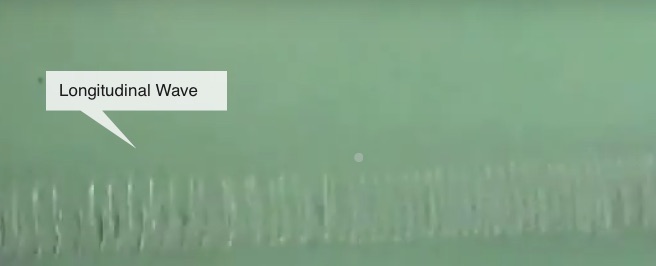Experiment 5 - Waves in springs
Sound starts by compressing the air, squashing it up. This sends a series of ‘longitudinal’ waves of compressions and stretches through the air.
In the video you will see first a longitudinal wave and then a transverse wave. The transverse wave is like a ripple on the surface of water, or light when represented as a wave. The longitudinal wave does its waving in the direction of travel, so there are no side-to-side wiggles.
It seems reasonable that sound should be a longitudinal wave, thinking about the way a sound is produced, effectively by repeatedly pressing on the air.
Click the image to watch the video.
Thanks to St. Mary’s University of Halifax, Canada for permission to use of this video.
It seems reasonable that sound should be a longitudinal wave, thinking about the way a sound is produced, effectively by repeatedly pressing on the air.
Click the image to watch the video.
Thanks to St. Mary’s University of Halifax, Canada for permission to use of this video.

